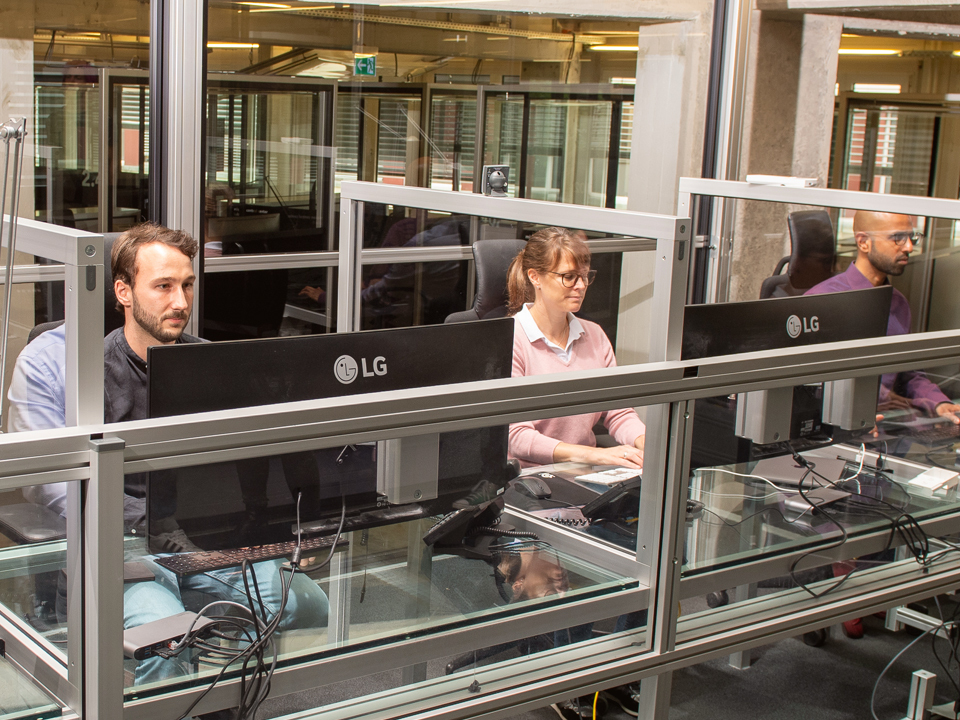
What’s Driving SOC NOC Convergence

Networks are evolving. They must support a growing remote workforce, the widespread use of cloud applications, and a requirement for agile IT everywhere.
Starting off with the difference between SOC vs. NOC. SOC is responsible for protecting an organization against cyber threats and strengthening an organization's assets to prevent further attacks. NOC on the other hand is the team within an organization that is responsible for ensuring the corporate infrastructure is capable of meeting business news by optimizing and troubleshooting the corporate network. The main differences between the two are the objectives. The SOC objective is to protect networks against cyber threat actors while the NOC objective is to address disruptions and ensure the network is capable of meeting SLAs during normal operations.
As the probability of severe cybersecurity incidents increases, our dependency on SOC networks becomes increasingly mission-critical. For networks to be both agile and secure, security can no longer be layered over like a cumbersome suit of armor. Security needs to be woven into the fabric of the network. This new reality has led to the blurring of the lines between networks and security by new architectures like SASE, the introduction of ZTNA for access control, and the growth of mobile access point platforms that fuse network operations centers and security operations centers into a single operation.
“The lines between them (SOC NOC) are becoming increasingly unclear as more advanced cyberattacks tend to freely jump between attack surfaces of different IT equipment.” (1)
As networks and security continue to converge, why should businesses consider consolidating independent SOCs and NOCs into a single unified operations center?
Reason 1: Unified Cross-Domain Visibility
Unified NOC-SOC networks allow administrators to have visibility of both domains simultaneously. They can deep-dive into either security or network issues from one interface or explore cross-domain incidents that involve both. For example, NDR (network detection and response) becomes more efficient when security and networks and the teams that manage them stop reacting separately. Response times are faster when SOC network and NOC act as one. It’s also the best way to manage access points and endpoints where connectivity and security converge into one platform.
“CTO/CIO and Chief Information Security Officers (CISO) will be well served in understanding what a potential collaborative, efficient effort integration brings versus having two separate siloed teams with very little crossing of paths except for at a Lessons-learned/After-action meeting. The exploration of integrating a SOC NOC is something every organization should consider.” (1)
Reason 2: Unified Automation and AI
Automation and AI play an ever-increasing role in managing security and network efficiency because data is power.
“More security budget is being applied to automation. The budget picture improved measurably year over year, with increases between 3% and 10% across the board for automation projects and an anticipated increase of 16% next year.” (2)
There are many examples of how a unified NOC-SOC network with cross-domain orchestration and automation streamlines operations. Adding additional sites, mobile access points, or integrating recent business acquisitions is greatly simplified when independent network and security procedures are synchronized, automated, and delivered in one simple step. For example, unified operations ensure security is automatically included when MPLS paths are rerouted through lower-cost broadband connections. With unified operations, access point functions such as firewall, application optimization, and routing can be uniformly managed with one set of policies, which dramatically simplifies management. Identifying and containing cyberthreats with a single automated service is must faster than trying to coordinate two.
Reason 3: Reduced Costs, Increased Resources and Faster Response
Bad actors and networks have one thing in common: they operate around the clock. This means businesses need to have separate network and security facilities, tools, infrastructures, and people available 24x7x365 to ensure their networks and business remain safe and functional. Having separate security and network operations leads to redundant costs and service overlaps. By unifying security and network functions, duplicate costs are eliminated, and overlapped expenses are consolidated. Costs are greatly reduced when separate operations are consolidated into one.
A unified operation center also eliminates redundant tasks, coordinating disparate functions, along with independent reporting, budgeting, and compliance. IT professionals will have more time to focus on important strategic plans. Regaining valuable IT resources presents a windfall for many businesses struggling to fill vacant cybersecurity and network positions.
“Integration of both (security and network) groups at the frontlines of defense in many organizations could potentially be the best way to lower costs, increase efficiency and optimize resources.” (1)
A Word of Caution
Combining a SOC and NOC into one isn’t simple. Security and network boundaries should be established to avoid creating new overlaps.
“Integrating a SOC NOC requires convergence and integration at the organizational level (i.e., common first-level response), system-level (i.e., integrated ticketing and workflow) and asset level (i.e., shared sensors and criticality information).” (3)
Cross-domain procedures need to be created or updated to drive workflows that align with the new operational architecture. General tools need to be evaluated to eliminate redundancy. Simultaneously, essential tools used for security and network operations should be integrated into the unified platform to simplify access, use, and maximize value. Cross-training and knowledge exchange between network and security experts should be encouraged. Deciding exactly when to migrate to a unified operations center is complicated given the myriad of variables and considerations.
Open Systems has provided security and network solutions for over 30 years, including SASE, ZTNA, and MDR. We offer a 24x7x365 global network of unified SOC-NOCs using a DevSecOps methodology. They are staffed by level-3 trained and certified engineers with 140+ hours of rigorous training. To us, it’s not just integration for the sake of integration or to even make things easier. It’s about detecting threats earlier in the kill chain so we can keep our customers’ businesses humming. Learn more about how our advanced SOC can help protect your organization.




